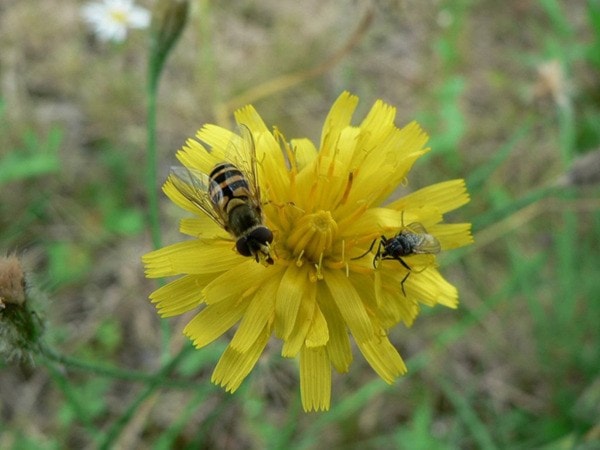<!-- /* Font Definitions */ @font-face {font-family:Cambria; panose-1:0 0 0 0 0 0 0 0 0 0; mso-font-alt:"Times New Roman"; mso-font-charset:77; mso-generic-font-family:roman; mso-font-format:other; mso-font-pitch:auto; mso-font-signature:3 0 0 0 1 0;} /* Style Definitions */ p.MsoNormal, li.MsoNormal, div.MsoNormal {mso-style-parent:""; margin:0cm; margin-bottom:.0001pt; mso-pagination:widow-orphan; font-size:12.0pt; font-family:"Times New Roman"; mso-fareast-font-family:Cambria; mso-fareast-theme-font:minor-latin; mso-bidi-font-family:"Times New Roman"; mso-bidi-theme-font:minor-bidi; mso-font-kerning:1.0pt;} @page Section1 {size:612.0pt 792.0pt; margin:72.0pt 90.0pt 72.0pt 90.0pt; mso-header-margin:36.0pt; mso-footer-margin:36.0pt; mso-paper-source:0;} div.Section1 {page:Section1;} -->
If you think it seems like a particularly bad summer for wasps, you could be right.
Stingers in tow, the little insects are popping up everywhere, whether at a barbecue or a picnic or just walking around.
So what do you do? Swat at the little buggers? Ignore them? Or concede and go inside?
“I’ve heard it’s been a bad year for wasps,” said Graham Watt, project coordinator for the Kettle River watershed plan. “Personally, I’ve seen a lot of wasps around in places—there seems to be nests everywhere including my truck, in our RV and everywhere.”
Watt said the recent hot, dry weather has been ideal for wasps. Although there is nothing in place to measure wasp populations, through his work with the regional district Watt has heard complaints from across B.C. about the insects.
Watt said that wasps eat a number of things from other insects to any form of meat.
“They require calories to basically feed the eggs and developing wasps back at the nest,” he said. “The workers, the females, are out there looking for food. Some of the queens build nests around your house; in little nooks and crannies. It usually becomes a problem for us when we step on them or stir up their nests.”
Watt adds that it’s usually best not to bother the wasps unless you have to.
“The wasps do such important things in the garden by pollinating plants and helping control other insect populations that might be pests,” he said. “Focus on maybe getting rid of the problem nests but allow them their space to do their work—especially if you don’t have allergy concerns.”
Wasps do vital work in the insect world. If it was not for wasps—who prey upon nearly every species of insect—the balance of nature would be out.
Wasps are considered a natural bio control, and are increasingly used in agricultural pest control as they prey on pest insects and have little impact on crops.
Although there are several sprays and chemicals available to get rid of wasp nests, Watt said there are methods available online that are much better for the environment.
“Some people use soap, water and vinegar mixtures to spray them,” he said. “But certainly if you have a problem infestation you should call a professional. You don’t want to be digging around and causing problems for yourself. But for smaller nests, there are definitely safe products out there.”
At davidsuzuki.org, the environmentalist recommends several methods for deterring wasps: Don’t wear bright colours; don’t wear sweet smells; cover meat and fish when barbecuing; don’t leave out sugary drinks like pop; clean up rotting fruit from your fruit trees; cover your compost pile with a lid or lots of “browns” like dry leaves; and keep your trash bin clean.
Suzuki also recommends not swatting at a wasp because they can release a pheromone that will attract other wasps and signal them to be aggressive.
German wasp.
The basic morphology of a female yellowjacket wasp.
A young European paper wasp queen founding a new colony.
Wikipedia commons public domain photos
There are well over 100,000 species of wasps.
The majority of those species are parasitic, and they often lay eggs directly into the body of the host.
Most people are familiar with the wasp Aculeata, of which many of the species contain a venomous sting.
That same family of insects also contains ants and bees, and many wasps are commonly mistaken for bees, and vice-versa.
Wasps fall into one of two main categories: solitary wasps and social wasps.
Solitary wasps live and operate alone and do not construct nests. Social wasps can live in colonies that number up to several thousand insects, but not all wasps in those colonies may be able to reproduce.
Wasps are parasites and feed only on nectar as adults.
Many wasps are predatory, using other insects (often paralyzed) as food for their larvae. In parasitic species, the first meals are almost always derived from the host in which the larvae grow.
Some types of social wasps are omnivorous, feeding on a variety of fallen fruit, nectar, and carrion.
Some of these social wasps scavenge for dead insects to provide for their young. In many social species, the larvae provide sweet secretions that are consumed by adults.
Adult male wasps sometimes visit flowers to obtain nectar to feed on in much the same manner as a honeybee.
The vast majority of wasps play no role in pollination, but a few species can transport pollen.
Adult parasitic wasps themselves do not take any nutrients from their prey, and, much like bees, butterflies and moths typically derive their nutrition form nectar.
Parasitic wasps sometimes paralyze their prey by injecting it with venom through their ovipositor (stinger). They then insert one or more eggs into the host or deposit them upon the host externally.
The host remains alive until the parasitoid larvae are mature, usually dying either when the parasitoids pupate, or when they emerge as adults.
Wasps build their nests in a variety of places, often choosing sunny spots.
Nests are commonly located in holes underground, along riverbanks or small hillocks, attached to the side of walls, trees or plants, or underneath floors or eaves of houses. Wasp nests are most easily found on sunny days at dawn or dusk as the low light levels make it easier to spot the wasps flying in and out of their nests.
Wasps will attack and sting humans, particularly if threatened.
Source: Wikipedia
